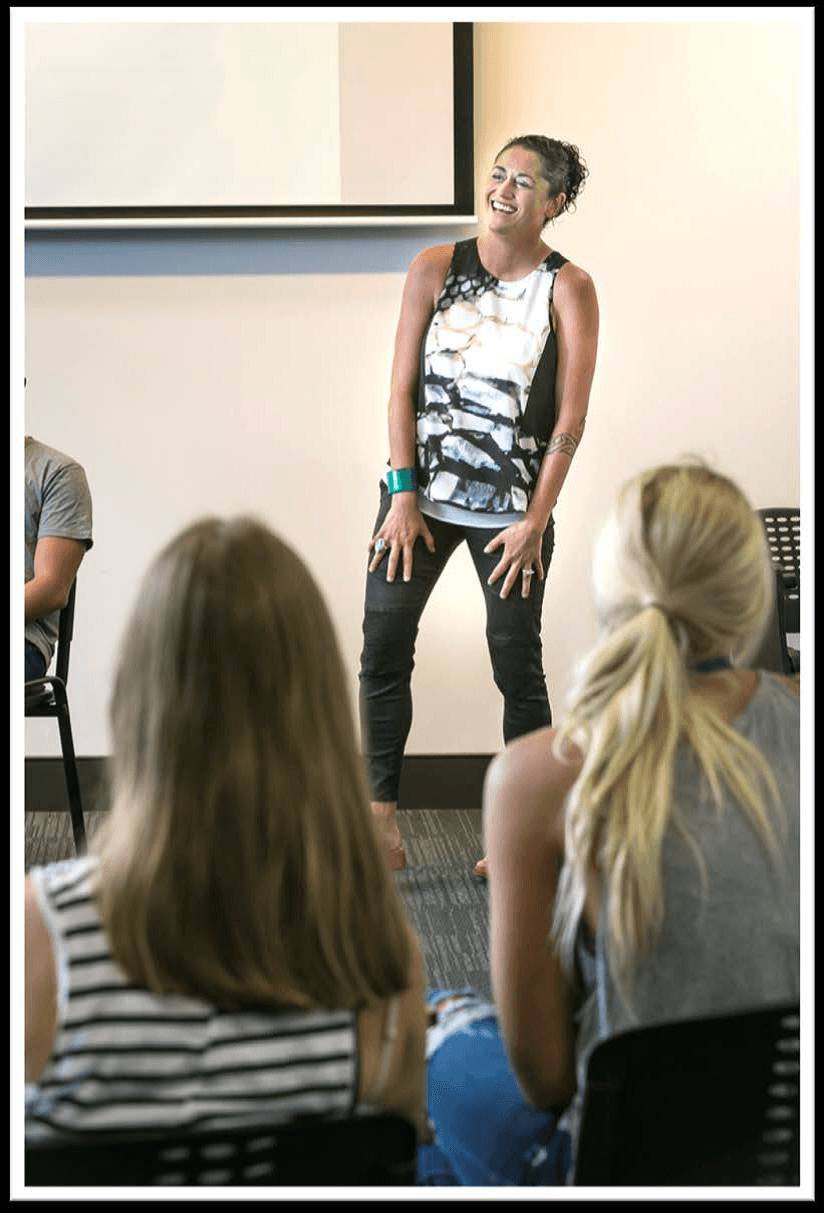MAPAS
This section follows the story of the Maori and Pacific Island admissions scheme from 1972.As former staff member Graham White noted in a 2017 interview:
There was one student came in ahead of the MAPAS scheme. Pamela Bennett came in 1971 just as an ordinary applicant.
Pamela Aratukutuku Bennett, however, was far from an ordinary applicant. Her grandfather Frederick Augustus Bennett, who was of Māori and Irish ancestry, was consecrated in 1928 as New Zealand’s first Māori bishop. Her father Henry Rongomau Bennett, one of 19 children, graduated in medicine from Otago in 1944.
As an undergraduate Henry produced a public health thesis entitled `Some Psychological Aspects of the Māori’, a work which was still regarded in 2000 as `a significant piece of writing on Māori health’. Given this background it was not surprising that Henry became the country’s first Māori psychiatrist and was appointed medical superintendent of Tokanui Hospital in the early 1960s.
Pamela, whose mother was Pakeha, graduated in 1977 and followed in her father’s footsteps. She was a member of the Department of Psychiatry at the University of Melbourne for almost two decades before returning to her alma mater in 2001 as a clinical lecturer. From 2003-13 Bennett was a senior lecturer in the Department of Māori and Pacific Health (now Te Kupenga Hauora Māori).
Bennett’s research interests focused on Māori concepts of mental health and wellbeing and she was the Principal Investigator for the New Zealand portion of Roots of Resilience, an interdisciplinary collaboration funded by the Canadian Institutes of Health Research to investigate mental health among indigenous peoples in Canada and New Zealand.
The family calling continued into the third generation with Pamela’s niece, Jelena Ara Bennett, who qualified MB ChB Auckland in 1994. In a recent interview Jelena stated that: Probably the biggest influence was my grandfather. He was the first Māori psychiatrist. There was almost this expectation that I would always go into medicine. The seed was planted while I was very young, but luckily for me there was a receptive soil.
Jelena also revealed that the catalyst in determining her career path was her aunt Pamela, who sat her down and told her `I really think you should consider psychiatry’.
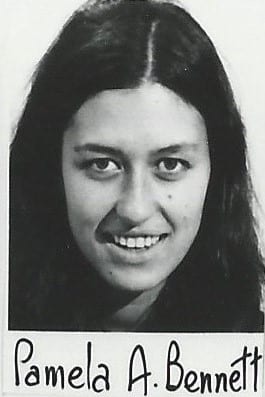
In November 1970, during discussion of the Education Amendment Bill, Matiu Rata, Labour MP for Northern Māori 1963-79, initiated an important discussion about the definition of Māori. He opposed the concept of Māori as a `person intermediate in blood between a half caste and person of pure descent from the Polynesian race’ and suggested adopting the interpretation used by the Māori Education Foundation, that a Māori `is any person of Māori descent’. The ensuing debates focused on issues such as determining whether Māori and Polynesian scholarships should be based on blood and culture, and the extent to which they should be decided by academic merit. As Education Minister Brian Talboys explained:
When we are providing scholarships for Maori people we should be sure that they are in fact Maoris, and have not just a small part of Maori blood in them and, as I have suggested, have brown eyes.
The timing of this debate was important to developments in the Auckland Medical Faculty, which held its first formal meeting on 17 June 1970, more than two years after the admission of the first students. The inaugural Dean, Cecil Lewis, had been keen from the outset to attract Māori and Pacific applicants and in early 1971 encouraged two of his foundation staff, John Werry and Graham White, to propose the inception of a targeted entry scheme for such students. In June 1972 the University Senate approved the Faculty’s recommendation, on the understanding that only 3 places at most were likely to be allocated in any one year (from a total annual intake of 60 students).
Rankin was followed in 1973 by another MAPAS entrant, Stuart Anthony Walker, the son of Māori activist and Auckland academic Ranginui Walker (who was of Māori and Lebanese descent and married to a Pakeha). After qualifying in 1979 Walker trained as an anaesthetist. The Australian and New Zealand College of Anaesthetists established an Indigenous Health Committee in 2010 and Walker has been a member since that date. In 2007 Stuart’s son Curtis, who had previously trained as a veterinarian, qualified in medicine from Auckland, having decided he wished to contribute to Māori health, and now works as a renal physician.
Despite the positive lead given by Rankin and Walker, the Polynesian preference scheme was slow to develop, with Dean David Cole stating in his 1975 inaugural address that none of that year’s 8 applicants had reached the required standard for admission; a special committee was established to examine the issue and Māori kaumatua were brought on board to interview prospective candidates.
Although the 1970s could hardly be considered a success story, the scheme was gaining momentum. In March 1979 there were 32 applicants and 4 admissions. In response to this the Medical Faculty resolved to increase the number of places from 6 per annum to 9. In 1987, however, it admitted that the 9 places had been filled on only two occasions.
During the 1980s MAPAS regularly demonstrated its value to New Zealand’s health sector, despite claims that some students were treated like second class citizens within the medical school while others lost touch with their roots through socialisation with non-Māori students during their training.
One of those who helped validate MAPAS was David Tipene-Leach who graduated in 1981. After some years as a GP in Māori communities in the Eastern Bay of Plenty, Tipene-Leach returned to the Medical School as a lecturer in Māori health, helped develop strategies to prevent Sudden Unexpected Death in Infancy (SUDI) among Māori mothers, and was founding chairman of Te ORA, the Māori Medical Practitioners Association.
Sue Crengle was another 1980s MAPAS entrant who went on to teach at Auckland and to lead Te ORA. A 1997 New Zealand Doctor profile revealed that she had entered medicine at the bottom of the class but had graduated near the top in 1986. A similar story can be told in relation to Jonathan Koea, now a prominent hepatobiliary surgeon. Koea fell 40 marks short of admission to the Medical School in 1982 but gained entry through MAPAS. Six years later he graduated as winner of two major awards, the Carrick Robertson Prize for surgery and the Butland Prize for clinical ability. In 2015 Koea was one of the inaugural winners of the Royal Australasian College of Surgeons Māori Health Medals for his contributions to indigenous health.
The 1990s saw an expansion of the MAPAS scheme, with 12 entrants in 1990 (the first time this had reached double figures), rising to 23 in 1999. From 1989 the entry requirements were raised to require an A Bursary, along with `cultural competency and involvement’, as assessed by the Māori community. In 1991 the Auckland University Medical Students Association gifted Ngā Kete Mātauranga (the baskets of knowledge), a study room where MAPAS students could provide peer support for one another. This coincided with the transfer of the last remaining pre-clinical classes from the Human Sciences Building on main campus to the Grafton site, a move welcomed by physico-chemistry lecturer Graham White because it created stronger links between students in years 1, 2 & 3, especially within what he labelled the MAPAS resource room.
The increased presence of Māori and Pacific students had important spin-offs. Sheree Moko, who graduated in 1993, became the first Māori woman surgeon, specialising in plastic and reconstructive surgery. Interviewed by the Māori magazine Mana in 2001, Moko stated that her bursary marks had been good enough to gain unrestricted entry to medicine but she had elected to apply through MAPAS so she could link up with `the other MAPAS kids’.
This support structure also helped three siblings into medicine in the 1990s. Cheri Hotu entered the MAPAS programme after completing a BA degree while her sister came to medicine via accountancy and her brother Mark with a BSC and teaching experience. Cheri graduated in 1998 and the other two did so in 2003.
Graham White was centrally involved in Medical School admissions from his appointment in 1967 until he retired in 1999 and kept detailed statistics throughout this period. In 2017 he offered the following reflections on the MAPAS scheme:
Over that period ‘72 to ‘79, there were only 23 preferential students, or MAPAS as we call them now, and 14 of them eventually did graduate, so about two-thirds of that completed the course. Not very good. I’d have to admit, that first phase of the MAPAS scheme we didn’t have things right…. By the time I left there were big numbers By 1998, there had been 849 MAPAS applicants, of which 22% – 190 – had been admitted, about the same proportion being admitted as other categories like school leavers.
By the late-1990s Māori and Pacific entrants made up around 12% of new students but there was a strong desire to see this increased.

Graham White
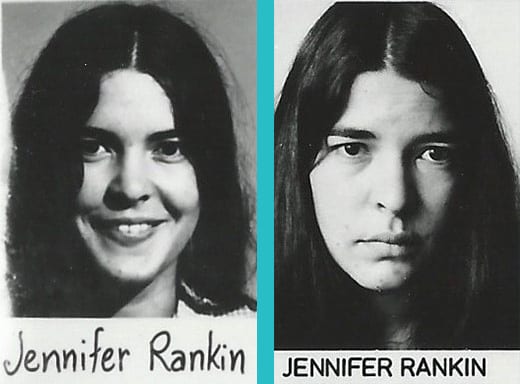
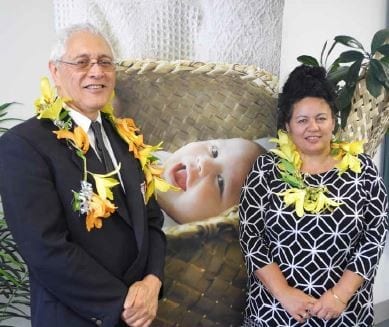
In 1997 Dean of Medicine Peter Gluckman and Professor Colin Mantell, who had been appointed to the new chair of Māori and Pacific Island Health the previous year in addition to the chair of Obstetrics and Gynaecology which he had occupied since 1977, proposed a radical solution to the shortage of Māori and Pacific doctors in New Zealand. From the mid-1990s Māori and Pacific entrants had made up 12 per cent of new students, a figure regarded by the Medical School as totally inadequate.
Gluckman and Mantell wished to increase that figure to around 40 per cent by recruiting an additional 50 Māori and Pacific Island students each year, on top of the current total intake of 110 students. In September 1997 New Zealand Doctor described this as a `courageous’ 10-year plan.
Interviewed in 2017, Mantell outlined the thinking behind the 1997 proposal:
About the same time we were looking at the situation because the Medical School was willing to take students, the University was willing to take students, but there were so few Māori qualified in science to be successful in the medical course. And so about that time we started talking about foundation programmes, and soon after we established the concept – we called it Vision 20:20 – perfect vision! Our stance was that by 2020, 10 per cent of New Zealand doctors would be Māori. An aspirational kind of idea to have, but the programme was arranged to get there, to do that. At that stage as I recall there were only about 5500, 6000 doctors registered in New Zealand, so 10 per cent – 500 – was practical. Possible.
This bold request was quashed by the Ministry of Health which feared it would lead to an over-supply of doctors. Three well-known Māori doctors – Professor Mason Durie, Dr David Tipene-Leach and Professor Mantell – then expressed their concern to Mana magazine that Pakeha doctors were being replaced by South African and Chinese doctors, who were even less in tune with Māori.
Despite opposition both inside and beyond the University, Vision 20:20 was launched in late 1998 and in March 1999 Nga Korero o Te Wa, a monthly summary of Māori news and views, reported that a quarter of the 1999 intake of medical students were Polynesian.
The new policy has borne fruit over the first two decades of the 21st century. In 2015 Dr Rawiri Jansen, himself a 2001 Auckland graduate and chair of Te Ohu Rata o Aotearoa – Māori Medical Practitioners, stated that the health sector would soon start to see a `tsunami’ of Māori doctors, though he warned they must be careful not to have them crushed by the weight of expectations. Māori and Pacific students accounted for about 20% of the 215 doctors to graduate from Auckland in November 2016. MAPAS and its associated programmes were credited with bringing about this change.
Peter Gluckman
As part of its Vision 20:20 project, in 1999 the Auckland Medical School introduced a `foundation year’ for Māori or Pacific Island high school students who required extra preparation to equip them for entry to the health professions. The aim was to admit around 150 each year, with the top third progressing to become medical students and the remainder entering other health science courses, such as pharmacy or nursing. Reflecting on this initiative in 2017, Colin Mantell explained:
We ran the Certificate in Health Science as a bridging programme. It had chemistry, some other sciences, skilled learning, how to write essays, that’s one part. We then made sure – and this got easier as the numbers got bigger – that students had a good environment in which to work, a supportive environment, so people didn’t feel they were always on the outer, always at risk of failure. And then we began tailoring, I suppose, programmes for particular students.
Leadership of the new programme was undertaken from 1999-2005 by Dr Robyn Manuel, a former medical laboratory trainee at Princess Mary Hospital in Auckland who had gone on to complete a PhD in chemistry at the University of Auckland. Prior to taking on the Health Science leadership role, Manuel had helped establish the tuākana programme in the Department of Chemistry in 1991.
In 2006, no fewer than 46 students successfully complete the Certificate and in 2008 the number of applicants jumped from 78 to 103. By then the pass rate for Certificate students had jumped from 24 per cent to 84 per cent.
One of those who benefited from this initiative was former Silver Fern netballer Sonya Hardcastle, who joined the programme in her late thirties, hoping her grades would be good enough to secure a place on the MAPAS scheme. As she later explained:
My sport background with the Silver Ferns meant I had developed a good work ethic in training and I applied those lessons to studying for medicine. I really had to get stuck in as I hadn’t done science at school, so I had to work hard and focus.
Sonya’s efforts were rewarded in 2015 when she graduated MB ChB, aged 43.
Another Certificate student who graduated in 2015 was Ebrahim Soloman, a former Rotorua Boys High School head prefect. Soloman had been inspired to seek entry to medicine by the example of Lance O’Sullivan, who as a 17-year-old had dropped out of the pre-med course after 10 weeks because he found it so overwhelming. Four years later, in 1994, he returned as part of a close-knit Māori and Pacific cohort. O’Sullivan graduated in 2002, was selected as New Zealander of the Year in 2014, and became a Distinguished Alumnus of the University of Auckland in 2017. Soloman, in turn, was the top Certificate scholar of his year in 2011. Two years later he outlined his motivation to the University magazine Ingenio:
I want to graduate as an outstanding clinician for Māori, committed to improving accessibility and informed communication for all patients, particularly Māori.
In May 2013, after attending the graduation ceremony for the 59 students who had completed the 2012 Certificate in Health Sciences programme, Dean John Fraser summed up the impact which this was having on the FMHS.
The joy and pride of these students and families was palpable, and was matched by that of the Certificate team who are achieving more and more each year.
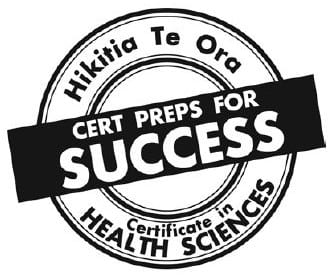
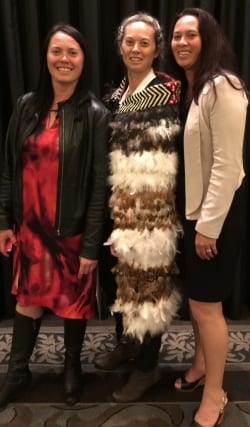
Elana Curtis, who graduated MB ChB in 1996, is one of the Auckland Medical School’s most influential Māori graduates, though her mentoring of MAPAS students. Like Stuart Walker, the second MAPAS graduate, Curtis was the offspring of a prominent Māori academic whose career began as a primary school teacher. Toby Curtis rose to become one of the country’s leading Māori educationalists and was knighted in 2014; his positions included principal of Hato Petera College, Deputy Vice Chancellor at Auckland University of Technology and Chairman of the Iwi Education Authority for Nga Kura a Iwi o Aotearoa (Tribal Immersion Schools).
In 2015 Elena Curtis received a national Tertiary Teaching Excellence Award for her contributions to MAPAS and the Certificate of Health Sciences since she took over as Kaiārahi (Academic Director) of the Certificate programme in 2005. As she explained in her application:
Being Māori is central to my identity as a tertiary educator. I am passionate about sharing my identity with my students, and I aim to use this passion to excite others in their own teaching and learning. Growing up a proud Māori girl in West Auckland I was ten years old when I decided I wanted to become a Māori doctor. Even at this young age, I could see that things Māori were not considered to be the norm, or were even regarded as being inferior. Being dragged around to numerous hui I was exposed to the cultural renaissance occurring for many urban Māori at the time. I was also fortunate to have strong hapū and iwi connections maintained by regular travel home to my iwi of Te Arawa.
In 2017 Curtis was joint winner of an inaugural LIMELight Award from the Leaders in Medical Education (LIME) Network, and the MAPAS scheme itself was recognised for its `outstanding and innovative programme in the area of student recruitment and support through to graduation in medical schools, including student outcomes’.
As Deputy Dean Ian Reid had observed in 2009 when a MAPAS student won the Procare Prize in General Practice:
I certainly was left with the impression that these students, and indeed the MAPAS programme itself, are very much on the right track.
